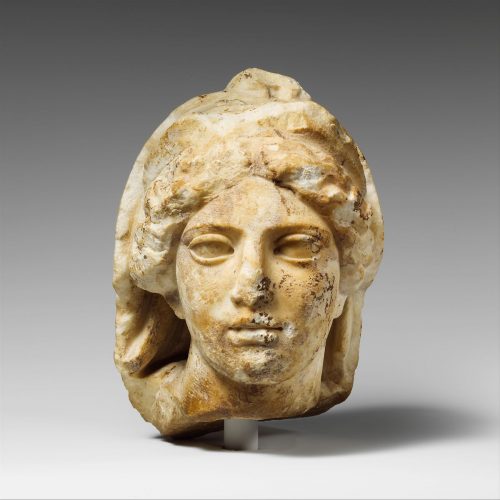Recently, I taught an adult class about classical art and spent time, with my editor’s hat on, explaining the difference between the words ‘classic’ and ‘classical’, and whether to capitalise these words in a sentence. Both words imply that something is of a special class, and refer to high culture, especially the civilisations of ancient Greece and Rome (hence the study of the classics).
First, where do these English words come from? One theory is that ‘classic’ and ‘classical’ derived from the French term classique in the seventeenth century, which derives from the Latin word classicus, denoting the first rank of Roman citizens.
One functional distinction between the two words is that although classic can be a noun or an adjective, classical is never a noun.
‘Classical’ has a few definitions, usually relating to well-defined historical periods of culture and science. The word is suffused with a sense of history and great artistic traditions.
The classical period (the classical era, classical antiquity or classical age) is the period of cultural history (relating to literature, art, architecture and ideals) between the 8th century BC and the 6th century AD centred on the Mediterranean Sea, comprising the interlocking civilisations of ancient Greece and ancient Rome known as the Greco-Roman world.
Throughout my art history studies, we were told that classical was not capitalised if referring to both ancient Greece and Rome (as above).
Renaissance artists were fascinated with the values of classical Greece and Rome.
But it is capitalised if referring to a specific period, for example, the Classical period of ancient Greece (480–323BC).
One of the most frequently copied Greek statues was the Spear thrower by Polykleitos, a work that epitomises the intellectual rigor of Classical statuary design.
To add to the confusion, the term classical is also used as an adjective:
- relating to a period of outstanding European orchestral music in the late eighteenth and early nineteenth centuries characterised by an emphasis on balance, clarity, and moderation.
We enjoyed listening to the classical music.
- to refer to art forms such as ballet belonging to a long formal tradition.
Lucy’s only eight years old and she has learned to dance both classical and modern ballet.
***
As an adjective, ‘classic’ can mean (1) of lasting significance or worth (2) typical, and (3) adhering to established standards of elegance or restraint, and authenticity.
So the word suggests a timeless quality.
Sarah teamed her black dress with classic black hi-heels.
The cricketer was applauded for her classic one-handed catch at the MCG.
It’s a classic motorbike from the 1940s.
As a noun, ‘classic’ can mean an enduring work, a traditional event, or something with a longstanding reputation of high quality.
There was a crowd at The Honda Classic, one of the PGA golf tournaments.
Tolstoy’s ‘War and Peace’ is a classic.
And for a bit more fun, ‘classic’ can be used to refer to a memorable incident:
Remember when our guide fell over that priceless sculpture? That was a classic!
In plural form, ‘classic’ is usually capitalised—the Classics, which refers to the study of ancient Greek and Roman culture, language and literature.
Charlie studied Classics at university.
But it is also acceptable to not capitalise it.
Charlie studied the classics at university.
In general, sharply delineated archaeological/art historical period titles are capitalised.
the Augustan Age
Baroque
Bronze Age (Early Bronze Age, Middle Bronze Age)
Counter-Reformation
Gothic
Greek Classicism of the fifth century (otherwise classicism)
the Enlightenment
Impressionism
Iron Age
Mannerist
Middle Ages (the High Middle Ages, but early Middle Ages, late Middle Ages)
Neoclassicism for the late-eighteenth century (otherwise neoclassicism)
Post-Impressionism
Renaissance (Early Renaissance, High Renaissance)
Reformation
But when referring to broader periods and terminology, don’t capitalise.
ancient Greece
antiquity
classicism (see above)
late antiquity, late antique
the classical period
the medieval period
neoclassicism (see above)
postmodern
prehistoric
Finally, ‘classy’ is a less formal word relating to class/classical. It brings high culture down to a more informal application to denote something stylish, elegant, sophisticated, or even superior.
The classy hotel made everyone feel uncomfortable.
Dressed in classy linen trousers, she walked onto the stage.
If you are ready to have your writing edited or proofread, or you would like an appraisal of your writing, whether it is a complete manuscript or a work-in-progress, then please email me on denise@denisemtaylor.com.au or via my contact page with a brief overview of your needs.
My editing is based on the Australian Style Manual (ASM) unless an author has been commissioned to write a book using the publishing house style guide. In particular, editing academic writing requires the editor to adhere to the preferred style and referencing of the university department or publisher.
Featured image: Marble head of a woman wearing diadem and veil, 425–400 B.C., Greek, Marble, The Met, New York






